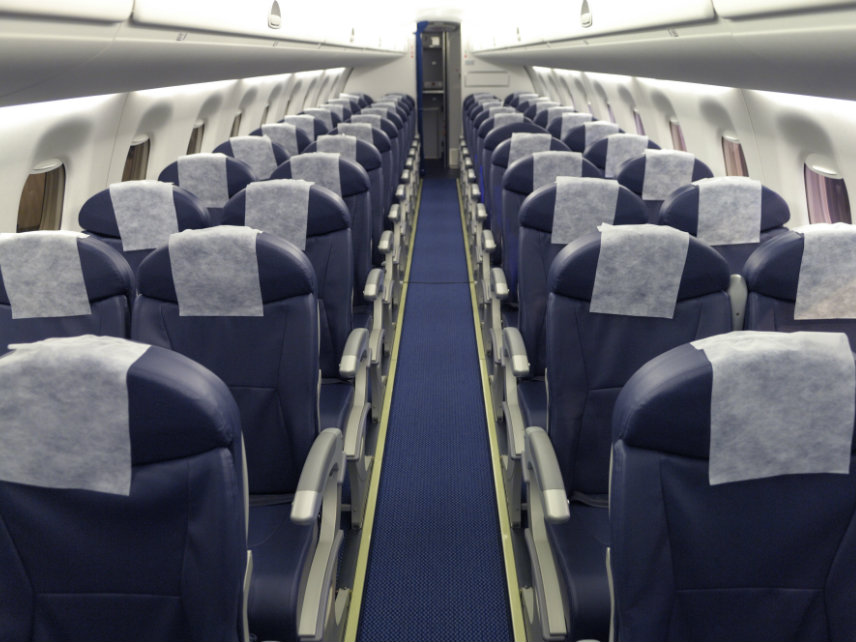FAA Decides Against Airline Seat Size Regulation
The agency decided that airline seat sizes don't have a discernible effect on passenger safety.

Cramped airline seats might be uncomfortable, but the Federal Aviation Administration (FAA) has decided they're not unsafe. Therefore, the agency concludes, they're no business of the federal government.
Following a petition from a consumer advocacy group called Flyers Rights, the U.S. Court of Appeals for the D.C. Circuit ruled last July that the FAA must justify its reasoning for not regulating the size of seats. In its response, the agency said "no evidence…demonstrates that current seat dimensions (width and pitch) hamper the speed of passenger evacuation."
"The FAA has no evidence that a typical passenger, even a larger one, will take more than a couple of seconds to get out of his or her seat," the agency reports. Under FAA rules, planes must be capable of being evacuated within 90 seconds.
Flyers Rights is considering an appeal.
Opponents argue that the evacuation models employed by the airlines fail to consider atypical passengers, such as children, women in heels, and senior citizens. But regardless of seat size, these people will always take longer to evacuate a plane; making them more comfortable in the air will do little to save their lives in case of an emergency. Seats might be smaller than they were 40 years ago, but you would be hard pressed to find anyone unable to exit a plane because he gets stuck.
In fact, in the time that seats have shrunk, airplanes have gotten cheaper and safer. Airline casualties dropped 92 percent from 1972 to 2015 as the number of passengers carried by planes rose from a meager 310 million in 1970 to 3.2 billion in 2014. Meanwhile, ticket prices dropped drastically.
But it is true that airlines have been reducing the size of seats as part of an effort to get more passengers from place to place. According to Fortune, the average pitch (which is used to determine legroom) of airline seats has dropped from 35 inches to 31 inches, and the average width has fallen from 18 inches to about 16.5 inches since the 1970s.
In their original petition, Flyers Rights also insisted that passengers suffer from "soreness, stiffness, [and] other joint and muscle problems" because of the unergonomic seats offered by airline companies. They also noted the possibility of deep vein thrombosis, which can occur in people sitting for too long. Indeed, there are health risks to sitting for too long in one place, but those problems can equally strike a passenger on a Greyhound bus or riding a cross-country Amtrak train. Deep vein thrombosis, the DC Circuit Court recognized, "rarely occurs and, regardless, is not caused by seat size or spacing."
Coercing airlines to increase seat sizes might make passengers more comfortable, but airline companies would be forced to cut corners elsewhere to make up for the lost costs, perhaps by charging more for check-in baggage or even reversing the downward trend in ticket prices. Increasing costs could reduce access to travel for lower-income individuals.
And if you want a larger seat, you can have one. Market forces have already pushed Delta Airlines to introduce larger economy seats than its competitors. Competition is often the best form of regulation, and reducing barriers to entry into the airline industry would inject more producers into the marketplace, forcing producers to innovate or go bankrupt.
Few things are worse than being cramped between two oversized strangers on a 14-hour flight, dueling on two fronts for armrests and knee space. Believe me, I know: I fly from North Carolina to India five times a year. But I'd rather fly in a small seat to see my family than not be able to visit them at all.


Show Comments (14)